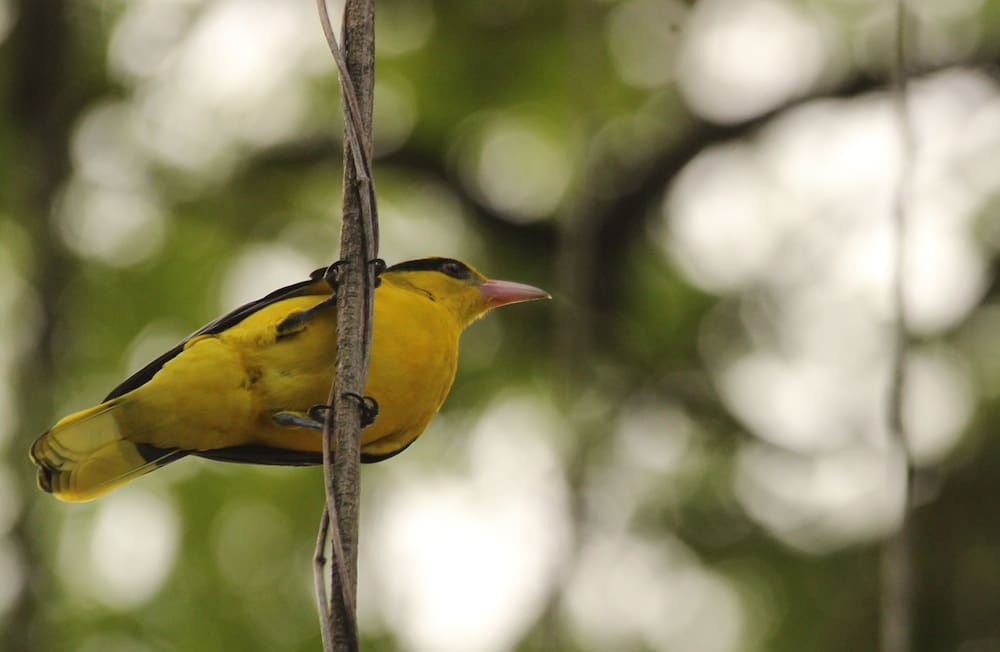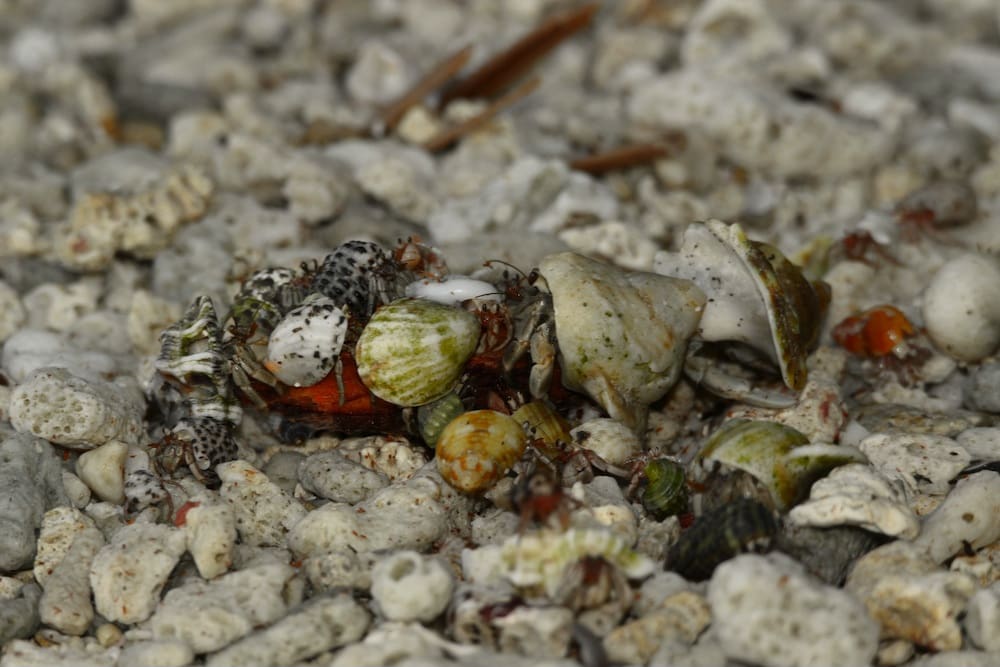The Andamans. Looking out of the window of a passenger aircraft descending to land, it looks like any other mass of land. Look closely you will see the work of a maverick artist with a sense of humour

Culturally the Andaman Islands would seem like a piece of West Bengal that drifted southwards to settle at a place equidistant from Bengali, Tamil, Myanmarese and Thai lands. Look beyond Cellular Jail, Ross Island and Viper Island, and you will notice subtle messages of evolution at work.
As I sat by the Radha Nagar Beach in deep contemplation, each swash of the wave seemed to be the brushstroke of an evolutionary masterpiece I was sitting on. The Andaman Islands are a cornucopia of beaches, hills, forests, farms, reefs, mangroves, cultural blend, history – sirens from Homer’s Odyssey for the unsuspecting tourist. But the epic connection ends there – the Andaman Islands is more like the island from L.O.S.T; it gives you what you come looking for.
The call of a Collared Kingfisher (Todirampus chloris) interrupted my meandering mind. Mindful of the work of art I was on, I set out to explore a tiny piece of the Andaman Islands.

Port Blair and Havelock Island are an avant garde work in evolution. From a distance, it might even seem like an evolutionary act of vandalism indulged in by a graffiti artist. A Coucal with the black replaced by brown, a woodpecker with its belly painted black, a sunbird painted olive. A Hill Myna, normally found high up in the Western Ghats, at sea level. A starling with its head painted white. Beyond the shrill calls of the Hill Myna (Gracula religiosa) and the raucous mimicry of the Greater Racket-Tailed Drongo (Dicrurus paradiseus) I noticed a missing note of monotony I would find in any wooded area in mainland India – the every present kutrrr….kutrrr of the Barbet family. It appears as though to hide the audacious work of the avant garde artist someone decided to put in the tourist attractions of Ross Island, Viper Island and Cellular Jail to divert the people’s attention from the blatant experiment on nature. But this is just skimming the surface; there is more that meets the eyes underwater.

My snorkeling guide told me that in 10 minutes over a reef I will see more variety of life I have ever seen on land. He was right in essence. As I skimmed the surface of water around South Button Island with my ear drums reverberating only to the chip… chip… chip sound of light rain hitting the water I was transported to a world of Parrot Fish, Sea Horses, Sea Cucumbers, Sea Urchins, Crocodile Fish and a number of colourful species I could not recognise. The corals had been bleached, though a few showed signs of the struggle to survive. There was colour all around — iridescent, fluorescent, pastel — but one needed the right palate to enjoy this palette.

Back on the Govind Nagar beach I watched Hermit Crabs scurrying for cover and later chewed on this marvellous creation of nature. While it is easy to brand Hermit Crabs as free-loading crustaceans, the life of a Hermit Crab is a struggle, for every time the crab outgrows its shell, it needs to find a larger one it can get into. During its life the Hermit Crab gets in and out of several shells – it is not difficult to put two and two together and realize why the airport authorities in Port Blair are particular that no natural souvenirs a taken out of the Andamans.


Cycling along from Govind Nagar beach to the Kala Pathar beach is a ride to savour. The road is well shaded by dense woods on either side and created occasional doubts about my spatial orientation when I passed through enclaves of Bengali music. I found spots in the woods by the beach created by high tide and understood what the word niche would look like pictorially.

Walking in the woods near Radha Nagar beach, I felt the avant garde artist was playing a practical joke. I saw a woodpecker — a familiar one — but with a red head and all-black body. What happened to the familiar white belly, I wondered? This is Andamans, I realized, and marked an “L” in my notepad (denoting lifer) followed by Andaman Woodpecker (Dryocopus hodgei). Radha Nagar offers this species large padauk and mahua trees to hammer out.


As I idled among the large trees, I walked up a path with a Serpent Eagle at twelve o’clock on my sight, unperturbed by humans, smaller and darker than its crested cousin –the Andaman Serpent Eagle (Spilornis elgini). The artist of the Andamans surely wanted novelty on this archipelago and took pains to create it, yet most visitors to this island leave fascinated at the dilapidated buildings, more than ten scores old, taking pictures of exotic ungulates. In addition to the history, I would like to nudge tourists towards the natural history of the Andamans as it might just be their last chance to see the result of millions of years of evolution before it withers away.
And as civilization grows on Andamans, there is a high vulnerability of exotics getting introduced. Introducing exotics is akin to picking up a Rembrandt and making it all colourful – no, the result is not a Monet, it is a mockery that remains. But it lightens the heart to know Andaman and Nicobar Islands together have more than 500 islands out of which only around 40 are inhabited, and thereby out of bounds to exotics.




As I was returning from Neil’s Cove pondering about the evolution of endemic species on these islands, a head popped out of the grass, and a forked tongue emerged. I didn’t know whether to cringe or cry out in excitement, but the Water Monitor Lizard (Varanus salvator) made its appearance as though to introduce a hiatus in the conversation about evolution. The Greater Racket Tailed Drongo (Dicrurus paradiseus) and a group of Red Whiskered Bulbuls (Pycnonotus jocosus) burst out into a cacophony as though requesting the usual suspects be given their share of credit in a casting hijacked by endemics. And so they went into my trip list as well.


When I returned to Port Blair, Mt Harriet was closed and the trips to Wandoor and to Chiriya Tapu did not materialize due to inclement weather. However, within the vicinity of Marine Hill I was able to spot Red Breasted Parakeets (Psittacula alexandri), White Headed Starling (Sturnia erythropygia), Andaman Coucal (Centropus andamanensis), Vernal Hanging Parrot (Loriculus vernalis) among others.
It was time to bid Andamans farewell and as the flight took off from the Veer Savarkar Airport, clouds closed in over the island and it disappeared from view. The curtains had been drawn on the avante garde exhibition.
Text and Photos: Anand Yegnaswami
- Kutch Diaries – Spying on the elusive Desert Cat - June 10, 2020
- Kutch Diaries: Up close with the raptors of Banni - May 24, 2020
- Kutch Diaries – Going Waku Waku with Sandgrouse in Banni - April 29, 2020

